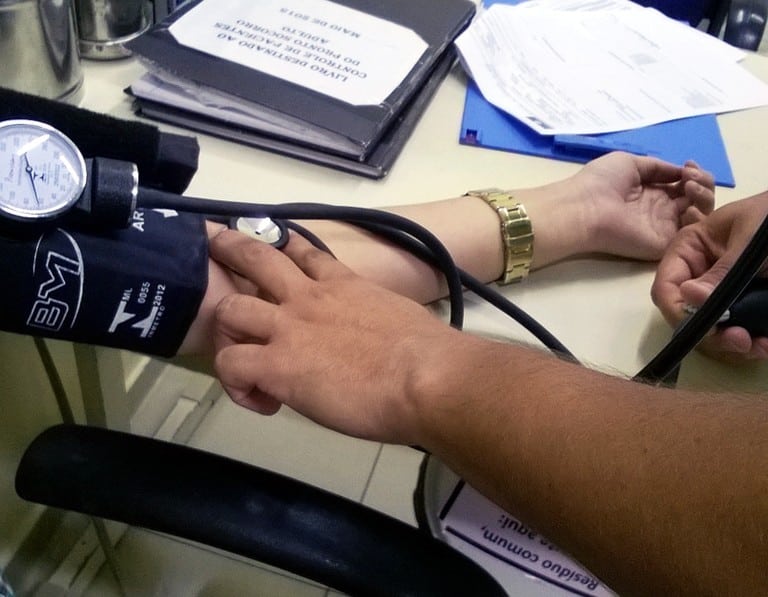Get the Most from Your Healthcare in Five Easy Steps
Young Americans today are taking on the world like never before, spreading awareness, embracing activism, and shouldering unprecedented levels of social and community responsibility. For a demographic so engaged in making the world better, millennials have a shocking tendency to switch off when it comes to a key part of bettering themselves as individuals: healthcare.
One of the main reasons young adults today are missing out on the full benefits of their health plan and available health services is quite simply that health insurance is complex and boring. Researching deductibles and premiums lacks the sexy, save-the-world appeal that speaks to the millennial activist spirit, but taking the time to understand health plan benefits can save money and help alleviate the disturbing trend among young Americans today: “I can’t afford to go to the doctor.”
Access to affordable healthcare shouldn’t be limited by your ability to navigate the ins and outs of health insurance. Read on for insider hints on simplifying and understanding the true costs of your plan, so you can get the most out of your benefits.
Why are millennials missing out on health benefits?
The biggest obstacle facing young adults in choosing health insurance is the insurance language itself. Too many healthcare consumers are overwhelmed by the complexity of the health plans and assume, “I can’t afford this,” when the reality is that many plans have lower cost options and subsidized benefits that make many necessary preventive and wellness procedures affordable or free.
Erin Hemlin, the health care campaign director for health policy advocacy group Young Invincibles summed up the problem in an interview with NPR: “It’s dry material…This lack of health insurance literacy is the biggest barrier right now. I want more young people to realize Oh wait. I actually can afford this”.
“For too long, it’s been too difficult to understand what health insurance is all about,” according to Christina LaMontagne, Harvard MBA and founder of NerdWallet Health, in an interview with Forbes magazine. “It hasn’t been user-friendly for a very long time.”
Step #1: Understand Your Health Plan Costs
Choosing a health plan may seem overwhelming, but the costs can be broken down into four key components: monthly premiums, deductibles, coinsurance or copays, and provider network. People tend to focus only on the monthly premium, because you pay it regardless of whether you see a doctor or file a claim. However, your actual cost includes all out-of-pocket costs that amount to the total you are at risk for having to pay each year, including:
- Monthly premium: a regular monthly payment towards your plan, usually a deduction from your paycheck for employees, or on a payment schedule like a car or loan payment for the self-employed.
- Deductible: the amount you pay for healthcare before health insurance will pay.
- Coinsurance: a percentage of any charges owed, even after the deductible is satisfied, until you reach an out-of-pocket maximum (e.g., insurance pays for 80% of a hospital stay and you are responsible for 20%).
- Copay: a flat rate charged per service until the out-of-pocket maximum is reached.
- Provider Network: providers who have negotiated agreements with the insurer and offer discounted services. Often means coverage may be denied to outside providers, additional charges may be levied, or referrals from in-network providers may be required to go out of network.
Provider networks are especially important in health plans like HMO, PPO, or EPO. HMO offers more savings and less flexibility in providers, PPO offers more flexibility at slightly reduced savings, and an EPO is a balance between the two.
Step #2: Choose the Right Plan for You
For many young adults in average to good health, a high deductible health plan is often the best financial bet. Premiums are lower each month, and the deductible is only spent when needed. Many higher premium, lower deductible plans are based on pre-consumption – the money needed to cover a major expense is prepaid to the insurance company as part of the premium. Once you pay that premium to your insurer, it’s gone, whether you use the healthcare services or not.
For patients unlikely to have major medical expenses, a higher deductible and lower premium saves money because the deductible is only used when needed. The only way most patients are going to hit a $5,000 deductible is through an inpatient event, chronic illness, or surgery. The average patient in the United States only has such an event once every 17 years.
Patients with more frequent and predictable medical needs may benefit more from a lower deductible plan. As such, it is important to discern where your medical expenses are going to go; for instance, if you are going to get treatment from this reputable Cosmetic dentist in Natomas to enhance your smile.
Step #3: Take Advantage of Tax-Free Savings Accounts
Health Savings Accounts (HSA) or Flexible Savings Accounts (FSA) are tax-free accounts used to save money for future healthcare and dental costs like co-pays, deductibles, prescriptions, and more. A key distinction to consider between the two is that when switching jobs, the HSA travels with the employee, but not all employers allow the FSA to carry over. Some FSAs expire at the end of the plan year, meaning you could be at risk of losing funds if you spend less on healthcare than you anticipate.
Step #4: Do Your Homework Before Making Your Appointment
Many medical offices will negotiate different rates on services for patients paying out-of-pocket, versus those submitting an insurance claim. Prospective patients can call for an estimate of the cost if submitted to insurance, and call again for an estimate for cash-pay. This information can be especially helpful before the yearly deductible is met.
There are a lot of tools available today that are designed to help healthcare consumers: transparency tools like Healthcare Bluebook that help estimate pricing and tools like GoodRx that offer digital coupons to help reduce pharmacy costs. Online healthcare marketplaces are also useful free resources for comparing the price of procedures at a glance and purchasing healthcare up-front at a set price, preventing any surprise billing after the appointment and can offer discounted rates. Services like these can help individuals significantly lower out-of-pocket healthcare costs and make hard-earned dollars go further.
Step #5: Embrace Prevention
An ounce of prevention is worth a pound of cure, and it also happens to be much more affordable. According to LaMontagne, “In the employer marketplace, there are plenty of preventative services like birth control, annual wellness visits that everyone with health insurance gets for free. Millennials not aware of that are missing out.” Employers and patients both benefit because preventive care helps prevent and reduce the incidence of more acute health episodes later, which are much more costly.
By regulating your weight through healthy diet, exercise, naturopathic remedies and supplements like nucific, you can eliminate unnecessary visits to the doctor and reduce your out-of-pocket co-pays.
The Bottom Line: It Pays to Be a Savvy Healthcare Shopper
Embrace physical and financial health. Too many young Americans are putting off getting regular healthcare because of uncertainty or confusion over costs. The tools exist, and are easily available to help millennials get the most bang for their buck from their health plans, and to save money on wellness and prevention that will help keep medical costs down and quality of life up in later years. A little bit of legwork can save a lot of money and a lot of headache.










